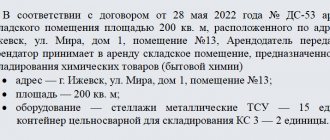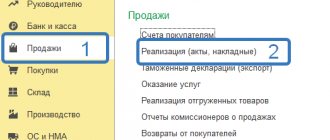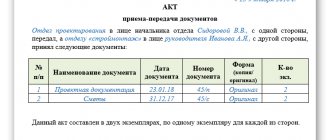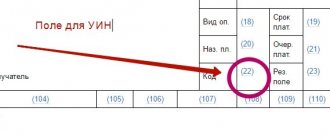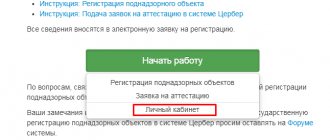In the previous article, we talked about 10 ways to prevent the delivery of low-quality goods under a contract. Now let's look at the specific actions of the customer - what he should pay special attention to, what documents to fill out and how to act in case of doubt.
When accepting goods, it is important to record the actions on paper or using photos. Representatives of the supplier and customer and invited experts must be present during this process.
The customer has the right to demand the presence of an authorized representative of the supplier when accepting the goods, and this is confirmed by the decision of the Vladimir OFAS Russia dated 08/05/2014 No. G 512-04/2014.
If the reception location is significantly remote, then the presence of a representative is ensured by issuing a power of attorney to the person who represents your interests (this person can be consulted by telephone).
Failure to ensure that a supplier's representative is present at acceptance will be considered a violation of the terms of the contract. In addition, the customer may refuse to accept the goods if there are complaints. There will be no one to submit written objections.
However, the customer is obliged to ensure the safety of the cargo without accepting the responsibilities of the owner. Refusal to accept may result in fines, penalties and unilateral termination of the contract.
If there are complaints about the quality of the product, you need to decide how you want to eliminate the shortcomings. If it is impossible to eliminate the shortcomings, you need to make a decision on unilateral refusal to fulfill the contract and follow the documentary procedures provided for by 44-FZ and 223-FZ.
Before signing the acceptance certificate:
- fill out the entry control report;
- check the accompanying documentation (certificate of conformity, quality certificate, other accompanying documents);
- evaluate the appearance, packaging and labeling of the product;
- If you suspect the presence of hidden deficiencies, conduct an independent examination.
What to do if the accompanying documentation is in doubt or discrepancies in the appearance of the goods have been identified?
- Refuse acceptance by photographing the goods and accompanying documentation (incoming inspection certificate, certificate of conformity, quality certificate).
- Make a note of the refusal of acceptance explaining the reasons for the refusal on your invoice and the supplier's invoice, but do not sign his invoice. Take a photo of both invoices.
- Ensure the safety of the goods (clause 1 of Article 514 of the Civil Code of the Russian Federation).
By order of the head of the organization, appoint a commission to re-accept the goods. The commission should include representatives of the buyer and seller. You can also hire an independent expert.
Based on the results of acceptance, you must either sign a document stating that you agree to accept the goods, or reject its acceptance. All stages of acceptance and verification must be accompanied by certain documents.
It is necessary to check the compliance of the delivered goods with the terms of the contract by requesting from the supplier accompanying documents confirming the quality of this product. Most often this is a certificate of conformity and a quality passport. These documents confirm the quality of the delivered goods, but do not guarantee it. Mandatory certificates are controlled by the state, but voluntary certificates cannot be verified without special knowledge.
That is why it is necessary to evaluate the external condition of the packaging and the labeling of the product. The appearance must meet the requirements of quality products.
Many counterfeit manufacturers, even at the stage of drawing up documents or labeling goods, cannot ensure that their products comply with GOST requirements.
If after inspection you begin to doubt the quality of the product, it is best to select samples and send them for examination. Any discrepancies in labeling, packaging or appearance must be documented. It is best to photograph the item and write down specific discrepancies. The supplier's representative must also sign this document.
After this, you need to officially appoint a commission to re-accept the goods. It may also include an independent expert that you have engaged. This commission will draw up all the necessary documents.
Examination: features of the conduct
There are three types of examination:
- examination of documentation;
- examination of the results of contract implementation by a third party;
- internal examination of the customer himself.
During the examination, it is necessary to check whether the procurement object meets the terms of the contract, and also pay attention to the quality and volume of goods supplied, services provided, and work performed.
Make sure that:
- the object of purchase has no defects;
- there is no damage to the purchased item (including packaging);
- the product lot is homogeneous;
- the expiration date has not expired;
- there are the necessary certificates.
Take into account the expert opinion when deciding whether to accept the results of the contract execution or not (Parts 3 and 7 of Article 94 of Federal Law No. 44-FZ)
Mandatory terms of the contract for the provision of expert services include:
- subject of examination;
- authority of the expert;
- conditions for admission to the examination (qualification of the expert and timing of the examination). The timing of the examination must correspond to the delivery time of the goods.
If an external examination reveals a violation of the terms of the contract, the customer is obliged to be guided by the conclusion of this examination and take measures provided for by law, up to and including unilateral termination of the contract. If an external examination reveals violations of the terms of the contract, the customer must decide what measures it will take against the supplier for violating the terms of delivery.
If any discrepancies are found during acceptance, you need to proceed to re-acceptance. If, as a result of the initial acceptance of goods, violations were identified, it is necessary to invite a representative of the supplier for re-acceptance by sending him a notification.
Act of delivery of goods under the contract
Sample act of delivery of goods under a contract sample act of delivery of goods
Moscow "11" September 2014 JSC "Legal Blog of Legal Relations", hereinafter referred to as the "Buyer", represented by General Director Artem Aleksandrovich Rusinov, acting on the basis of the Charter, on the one hand, and LLC "Golden Mountains", referred to hereinafter referred to as the “Supplier”, represented by General Director Grigory Grigorievich, acting on the basis of the Charter, on the other hand, collectively referred to as the “Parties”, have drawn up this act of delivery of goods (hereinafter referred to as the “Act”) on the following: 1. Goods by the Supplier under the contract No. 333 dated September 11, 2014 was delivered to the Buyer in full and of proper quality. 2. Should be transferred to the Supplier 15,000 (fifteen thousand rubles) 15 kopecks. VAT is not assessed (based on notification of the Federal Tax Service of the Russian Federation No. 113 for Moscow dated No. 13 of September 11, 2014 on the application of a simplified taxation system). 3. The parties to Agreement No. 333 dated September 11, 2014, declare that they have no claims against each other regarding the execution of this Agreement for the supply of goods. 4. This act of delivery of goods is drawn up in 2 (two) copies, one of which is with the Supplier, the second with the Buyer.
SIGNATURES OF THE PARTIES:
Supplier: _______________ Buyer: ______________
RAA Law
Free legal consultation by phone
Invitation to inspect the goods
If an authorized representative of the supplier is not present at acceptance, the customer must send an invitation to the supplier to inspect the goods no later than 24 hours after discovery of defects.
The invitation contains the following information:
- name of the product, date of its shipment;
- numbers of shipping documents or acceptance documents;
- the quantity of damaged goods and its value, the nature of the damage;
- condition of the fillings;
- the time for which the joint two-way acceptance is scheduled;
- acceptance address;
- Contact details.
The invitation to participate in the re-acceptance of goods shall indicate:
- place and time;
- composition of the commission;
- information about low-quality products.
Certificate of return of goods to the supplier
The certificate of return of goods is used to certify the fact of such return. Paper is used if the recipient receives a product of poor quality or that does not meet the stated technical specifications.
Fact! It is also allowed to return valuables of proper quality if they cannot be used. This fact itself is possible if it is permissible under the contract.
The return certificate is drawn up in the presence of representatives of both parties: the receiving party and the supplier. Documentation is drawn up in free form or according to a previously established template from one of the companies. The document states:
- Identification information about the paper (name, account number, place and date of preparation).
- Block of information about the parties. These are company names, addresses, legal forms and representatives. Directors and their deputies are often authorized to represent interests. It is stated on what grounds these persons represent the interests of companies.
- The same block contains the numbers of agreements and contracts on the basis of which cooperation takes place.
- The main part describes in detail the acceptance and transfer of products and detailed information about it. The detected defects and inconsistencies are indicated and on the basis of which documents they were identified. If an examination was carried out, data about it is entered in this paragraph.
- Based on the results of the report, further actions are prescribed (full refund and exact amount, exchange, repair or replacement of components).
The paper is signed by the parties.
Specifics of readmission
The fact of repeated acceptance must be recorded in the act in the TORG-2 form. Those goods for which no discrepancies in quantity and quality have been established are not listed in the acts. It is enough to make a note in the act: “There are no discrepancies regarding other inventory items.”
The fact of repeated acceptance is recorded in the invoice in the TORG-2 form. If the products are of foreign origin, then the TORG-3 form is used. Goods whose quality and quantity claims have not been established are not mentioned in this invoice. A note is made that there are no complaints about quality and quantity for other goods.
Deadlines for receiving goods according to quality
In order for the verification of a product for its compliance with established quality requirements to be objective, it is important to comply with the timing of its implementation. They are regulated by the quality acceptance instructions mentioned above and are still used in practice in the interaction between suppliers and consumers of goods.
In this case, the terms are directly dependent on the type of product supplied and the distance of the consumer from the supplier (they begin to be calculated from the moment the goods arrive at the recipient’s warehouse):
- 10 days - if goods are delivered within the same city (if the goods have perishable status - 1 day);
- 20 days - if goods are delivered from one city to another (for perishable goods - 1 day).
Special deadlines are established for goods delivered to hard-to-reach areas and regions of the Far North:
- 8 hours - for perishable goods;
- 40 days - for food products;
- 2 months - for non-food (including haberdashery) goods.
It is assumed that a product delivered but not inspected by the purchaser within the specified time may change its quality characteristics and, as a result, cease to meet the requirements for it.
Acceptance certificate
The act is drawn up in at least two copies - for the supplier and the buyer. It is stitched, sealed and signed by all members of the commission: the buyer, representatives of the supplier or manufacturer, and the expert. Photos of the act are sent to the rest of the commission members. If an acceptance participant fails to appear or a commission member refuses to sign the document, a note is made in the acceptance certificate.
A report is drawn up for everyone participating in the acceptance of samples, so that all participants can see that the product is marked with certain words and letters, that the packaging is in one condition or another, and that the product was found in one quantity or another.
All participants in the acceptance of goods retain the same documents with the signatures of all participants in the acceptance. If one of the commission members signs the act, a note about this is made in the act itself.
In the accompanying documents (railway waybill, waybill, invoice, invoice, etc.) for the received goods, a note is made about discrepancies discovered when drawing up the report. The act approved by the manager, together with accompanying documents, is transferred to the accounting department of the buyer’s organization. The accounting department calculates the amount of the claim.
In the accompanying documents, a note is made that after the initial acceptance, repeated acceptance took place and an act was drawn up in the TORG-12 form or a sampling act was carried out.
At the initial acceptance stage, the necessary marks must be placed on the invoice about all suspicious points that were detected. Often the invoice does not indicate the batch number of the delivered goods or its full range and there is no direct confirmation that, for example, the pipe was supplied along with a specific invoice, quality certificate and certificate of conformity.
The batch number, quality certificate number or certificate of conformity number can be manually entered into the invoice upon initial acceptance of the goods.
Documentation of goods receipt
In order for an employee of an organization to have the right to receive goods, he must be given the status of a financially responsible person and secured with a power of attorney. Then he will be able to stamp the invoice and sign for it. Otherwise, documenting the receipt of goods will fall entirely on the shoulders of the head of the company.
The product can be received without printing. To do this, the employee receiving the goods will need to present to the supplier a power of attorney in form M-2, issued in his name, and an identification document.
Acceptance of inventory items is primarily regulated by the supply agreement. It contains all the data about the product and its transfer of ownership. Correct documentation of goods acceptance involves the use of unified forms of primary documents: starting with TORG-1 and ending with TORG-14. They were approved by Decree of the State Statistics Committee of Russia dated December 25, 1998 N 132.
Not long ago, entrepreneurs had an alternative when running a primary business. In October 2013, the Federal Tax Service of Russia developed and presented a universal transfer document (UTD). Its form contains the mandatory details provided for invoices and primary accounting documents. Essentially, UPD is a combination of a delivery note and an invoice and replaces them. Organizations can use it either for VAT calculations and as a primary document, or only as a primary document, for example, to confirm expenses. If you accept goods into a store or warehouse using UPD, then almost everything that is written below about the set of documents for acceptance does not concern you. Except for the waybill. However, we advise you to read the entire text of the article in order to understand the logic of the goods acceptance process.
So, if you do not carry out acceptance using UPD, then the main document here will be the TORG-12 consignment note. If goods are transported from the supplier’s warehouse to your warehouse, then a consignment note is issued, which differs from a commodity bill in that it has a transport section. These documents can simultaneously be a receipt document for the recipient of the goods and an expense document for the supplier. That is why invoices are issued in duplicate. Please note that the new TTN form does not contain a description of the product - this block is located in the UPD or in TORG-12. Therefore, as mentioned above, with UPD you only need a waybill, that is, only two documents.
The goods were delivered to you, everything is fine with it and there is an invoice for it. Now you need to check whether it is filled out correctly: check the quantity, articles, company names and other important information. If everything is in order with this, then you can put the organization’s seal and signature.
The second document that usually accompanies the goods is an invoice. If you are a VAT payer, then you must carefully ensure that these documents are carefully collected for each arrival of goods at the warehouse. Without an invoice from the supplier, you will not be able to offset VAT, which means you will overpay the state. This document is required by companies paying VAT. Those who work under the simplified taxation system do not do this. There is no stamp on such a document—the signature of the accountant and the general director is sufficient. When returning, you will need to request an adjustment to the invoice from the supplier - after all, only the part of the goods supplied to you will be subject to VAT.
Quite often, an invoice is brought with the goods and these documents, which must bear the seal of the organization and the signature of the manager. By law, this is the basis for your payment for the goods delivered. In practice, the time of payment is usually regulated by the terms of the contract, and very often it is after payment for the goods to the supplier that delivery takes place.
How to write a letter of claim
The buyer draws up and sends a letter of claim or a decision on unilateral termination of the contract to the supplier along with a copy of the incoming inspection report and the TORG-2 form or an expert’s report (if an expert was involved).
These documents must indicate correct comments on the quality or quantity of the product and suggest ways to resolve the problem. After the act in form TORG-2 or another document has established the quantity of goods that does not meet the requirements of the contract, the buyer draws up and sends a letter of claim addressed to the supplier. The letter must list which products have complaints about quality and quantity and what the supplier must do to eliminate these shortcomings.
The claim letter and decision must include:
- name of the delivery document;
- date and place of document preparation;
- name of the organization on behalf of which the document was drawn up;
- a link to the supply agreement and the delivered goods (name, quantity, price, assortment, batch);
- a list of requirements to the supplier (refund of the amount paid, replacement of goods, elimination of deficiencies) to resolve the problem.
If you believe that it is impossible to eliminate the shortcomings, you can issue a unilateral refusal to perform the contract.
Participants
The act of acceptance and transfer of goods is a bilateral document, in the preparation and signing of which both parties to the contract, that is, the buyer and the supplier, take part.
The powers of participants to carry out operations related to the transfer and receipt of goods on behalf of legal entities must be notified in the text of the act.
As a rule, authority is confirmed by a power of attorney, orders, agency agreements or written instructions certified by a notary.
What is unilateral termination of a contract?
Unilateral termination of a contract is a procedure that starts from the moment you send notice to the supplier of your intention to terminate the contract. With the help of a complaint, you can indicate your intention to obtain a fine from the supplier, but penalties provided for in the contract do not motivate the supplier as much as unilateral termination.
The unilateral termination procedure assumes that:
- the contract must necessarily indicate the terms of liability of the customer and supplier for non-fulfillment or improper fulfillment of the contract (Part 4, Article 34 of Federal Law No. 44-FZ), penalties and fines for violation of payment terms (Part 5, Article 34 of Federal Law No. 44 -FZ);
- if some conditions and obligations upon termination of a contract are not described in the procurement law, the Civil Code and federal laws apply - to the extent that they do not contradict 44-FZ;
- If inconsistencies are found during the examination, it is necessary to draw up a report of the identified violations.
How is a decision made to unilaterally refuse to perform a contract:
- Within 3 working days from the date of the decision to unilaterally terminate the contract, the customer places it in the Unified Information System and sends it to the supplier by registered mail with return receipt requested.
- If within 10 days the contractor manages to correct the violations, then the customer is obliged to cancel the decision on unilateral refusal to fulfill the contract that has not entered into force (Part 14, Article 95 of Federal Law No. 44-FZ).
- The customer’s decision to unilaterally refuse to fulfill the contract comes into force, and the contract is considered terminated 10 days from the date the customer notifies the supplier of the unilateral refusal to fulfill the contract (Part 13, Article 95 of Federal Law No. 44-FZ).
The procedure for unilateral termination of a contract is prescribed in Art. 95 44-FZ. It lists all situations where the customer has the right to terminate the contract unilaterally. The main condition is the delivery of goods that do not comply with the conditions of the procurement documentation, or the supplier’s non-compliance with the requirements set forth in the procurement documentation.
The contract must specify the terms of liability of the customer and supplier for failure to fulfill the contract. If some conditions and obligations are not specified in the contract, the Civil Code applies - in those parts where it does not contradict 44-FZ.
If violations are identified during the examination of the goods, it is necessary to draw up a report on the violations identified. After you have sent a decision on unilateral refusal to fulfill the contract to the supplier, it must be placed in the Unified Information System.
The supplier will have 10 days to eliminate any identified deficiencies. He can either replace the product or write a reasonable refutation of your claims. If the supplier does not take any measures within the established period and does not eliminate the identified violations, the contract is considered terminated, and you have the right to announce a new purchase using a simplified procedure in a shortened time frame.
Certificate of acceptance and transfer of goods for safekeeping
Drawing up a paper on acceptance and transfer during responsible storage is considered a mandatory procedure. This document certifies that products in a certain quantity, assortment and with certain characteristics are transferred from one person to another. Thus, a new person in charge is installed.
Almost any goods and valuables can be accepted for safekeeping, of course, if their storage and use does not contradict Russian legislation.
An act is drawn up directly on the day of transfer in any form:
- for the procedure you can use the previously required template MX-1;
- formalize each new procedure in free form;
- fill out a single template established by the company.
As a rule, companies use MX-1 to facilitate document flow. In addition, no one forbids improving it: adding clauses or removing unnecessary ones according to the situation and the discretion of the parties.
Let's look at drafting the document using the MX-1 as an example. Please note that the paper consists of two sheets (front and back). The document states:
- data of the parties involved (receiver and sender);
- code designations, date of preparation and account number of the paper;
- information about the transferred values (name, characteristics, cost);
- On the reverse side special marks and storage conditions are written.
The act is signed by both parties.
Algorithm of actions when identifying violations of contract terms
The customer is obliged to make a decision on unilateral refusal to fulfill the contract if during the execution of the contract it is established that the supplied goods do not meet the requirements that were established by the notice and procurement documentation (clause 15 of article 95 of Federal Law No. 44-FZ).
44-FZ obliges the customer to make a decision on unilateral refusal to fulfill the contract if the supplied goods do not meet the requirements of the auction documentation, and gives the supplier 10 days to eliminate the identified violations.
If the supplier repeatedly delivers goods of inadequate quality, he can no longer eliminate the defects. If you repeatedly identify these violations, within 10 days after notifying the supplier of a unilateral refusal to fulfill the contract, the contract is considered terminated.
44-FZ does not oblige the customer to draw up claims or demands for elimination of deficiencies. You can immediately send a notice of unilateral termination of the contract, obliging the supplier to eliminate the identified violations as soon as possible. This allows you to quickly solve the problem of low-quality goods.
The customer is obliged to cancel the decision on unilateral refusal to perform the contract that has not entered into force if, within 10 days from the date of notification, the violation of the terms of the contract that served as the basis for making this decision is eliminated and the customer is compensated for the costs of the examination.
This rule does not apply in the event of a repeated violation by the contractor of the terms of the contract, which, in accordance with the Civil Code, are the basis for the customer’s unilateral refusal to fulfill the contract.
The customer is obliged to cancel the decision on unilateral refusal to perform the contract that has not entered into force if the supplier has eliminated the identified violations. This is beneficial for everyone: the customer receives his goods, the supplier avoids sanctions and receives payment under the contract on time.
Product disposal act
The act of recycling goods is the final stage in the destruction of certain objects in the company. Briefly, this procedure looks like this:
- the commission examines the goods, if necessary, an examination is carried out to determine the advisability of further use;
- If a decision is made to dispose of, a product write-off act is drawn up, on the basis of which. According to this document, the accounting department deregisters goods;
- recycling takes place, and a report is drawn up based on its results.
The document does not have a single template, so it can be compiled in any form. It’s easier to approve a single one for the organization.
The act should indicate:
- his details;
- information about the commission;
- information about recycled goods;
- state in text that during disposal there is no income from its results, and that the valuables are destroyed in full.
At the end, the commission members certify the act with personal signatures.
How does restriction of competition manifest itself?
When preparing procurement documents, care must be taken to ensure the quality of goods, but it is important not to overdo it or limit competition.
What violations do customers commit?
- The placement of unreadable and uncopiable materials is regarded as a restriction of competition. Even the WinRAR archiver is a paid program, so placing an archive in the .rar format is not entirely correct.
- All auction documentation must be placed in the Unified Information System in full. If some document is missing, a potential participant can complain to the FAS.
- In the technical specifications, the requirement to supply goods from a certain manufacturer must be accompanied by the words “or equivalent.” If there is no such amendment, the parameters to which the supplied product must comply must be clearly stated.
- It is impossible to establish a requirement that the supplier is not in the Register of Unscrupulous Suppliers. No such registry exists. There is a separate register of unscrupulous suppliers under 44-FZ and 223-FZ. It is impossible to demand that a participant not be on the register under 223-FZ if you are conducting a selection within the framework of 44-FZ and vice versa.
- It is unlawful to require delivery experience in a certain territory. All requirements related to the supplier’s experience in participating in auctions and government procurement are specified in 44-FZ and 223-FZ.
- It is prohibited to establish requirements that limit the circle of participants and do not confirm the quality of the work or services they perform.
- It is impossible to establish a requirement for ownership of the equipment, or that the work must be performed only on its own, without the involvement of subcontractors, or other restrictions that do not affect the quality of the work performed.
- It is incorrect to place requirements on the conformity of a product with specifications that are not publicly available, therefore membership in a certain self-regulatory organization cannot be required.
- The requirement to have a license for a certain type of activity must be enshrined in law and cannot be imposed at the request of the customer.
- Requiring only the manufacturer of the product to bid limits competition and discourages intermediaries who could potentially bid.
How to draw up a TORG-16 act on the write-off of goods
Form TORG-16 is used by trade organizations to write off goods that have become unusable or have lost their consumer qualities. For write-offs, a specialized commission is involved, which usually consists of three people. As a rule, this is a representative of the administration of a retail facility or network, a financially responsible person and any third representative (in some cases, this may be an employee of supervisory authorities).
F. TORGA-16 refers to primary accounting documentation and is enshrined in legislation, but, like all accounting documents, since 2013 it has been considered advisory for preparation. Therefore, each organization has the right to draw up its own single template or draw up paper in free form each time. However, to simplify document flow, TORG-16 is used. The document template specifies:
- at the top of the act – organization and structural unit;
- information about the prepared paper;
- in the upper right corner - code designations, just below - information that the manager approves the document;
- information about the authorized commission.
The main block about written-off goods contains:
- dates: receipts for registration and write-offs;
- information about the reasons for write-off;
- product name and characteristics;
- price, cost and notes.
The total cost to be written off is indicated after the table, and the commission members sign.
Below it is indicated where the write-off amount will be taken.
